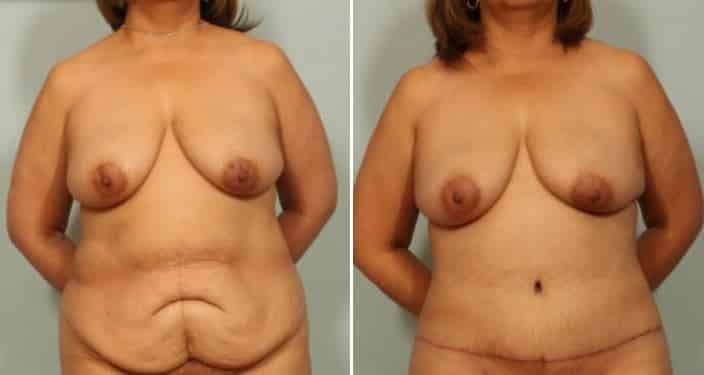Liposuction VS Tummy Tuck: What are the Differences?
Patients can sometimes feel unhappy with the contours of their bodies. Fatty deposits, particularly around the abdomen, thighs, buttocks, and arms, can distort body proportions and leave them feeling unhappy with their appearance. Liposuction and tummy tucks are often used to treat excess skin and fat – but what exactly are the differences between them?

About Liposuction
Liposuction is a procedure that surgeons use to remove fatty deposits from multiple areas of the body, including the arms, legs, hips, thighs, and stomach. By contrast, a tummy tuck is an intervention that removes excess skin and fat deposits on the abdomen specifically. Liposuction, therefore, is a treatment that clinicians can apply to many areas of the body whereas a tummy tuck only addresses the area around the stomach.
Liposuction involves making a small incision in the target area and using a hollow tube called a cannula to remove fat from the target areas physically. El Paso Cosmetic Surgery surgeons apply a local anesthetic combined with water to reduce swelling and make the process as pleasant as possible.
About Tummy Tuck
Tummy tucks involve changing the skin’s shape in the abdominal region so that it looks more contoured and less saggy. El Paso Cosmetic Surgery surgeons remove excess skin (usually resulting from weight loss) and then reattach the remaining fold to the lower abdomen. The result is a tighter, more toned-looking waist area that better reflects the hard work patients put into losing weight.
Patients have a visible scar after surgery. However, you can treat this by applying medical-grade scar products that minimize its appearance. Scarring tends to fade significantly with time.
Difference Between Liposuction and Tummy Tuck
Liposuction and tummy tucks are fundamentally different procedures. Tummy tucks apply specifically to the abdominal region and involve the removal of excess skin and some fat. Liposuction, by contrast, only requires a small incision for the insertion of the cannula and does not include the removal of non-fatty tissue.
The effects of surgery are also different. Tummy tucks produce manageable scarring on the lower abdomen that falls along the crease of the bikini line. Liposuction, by contrast, doesn’t lead to significant scarring. However, patients typically experience some swelling and tenderness in the days following the procedure.
Similarities Between Liposuction and Tummy Tuck
Liposuction and tummy tucks are similar in that they both involve the removal of fat from the body. The goal of both procedures is to enhance your contours, making you feel more confident.
Am I a Candidate for These Procedures?
Whether you are a candidate for these procedures depends primarily on your physical condition. Liposuction is best for people who want to remove small fatty deposits on the hips, thighs, and buttocks. Tummy tucks are suitable for people whose body mass index is below thirty and are trying to lose weight. People intending to get pregnant in the future should not opt for the procedure.
Take the Next Step
Interested in learning more about body contouring surgeries for yourself? Schedule a consultation at El Paso Cosmetic Surgery in El Paso, TX today! (915) 351-1116.
Disclaimer- Any price mentioned in blogs are indicative prices of the period the blogs were posted and not binding to our current pricing. Please call or text us for our current pricing.


